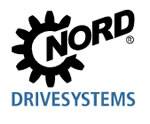New 3D Printing Method Based on Ultrasonic Manipulation Technology
Common Mistakes That Growing Manufacturers Make
Using 3d Printing in Education
How to specify an electric linear actuator that's industrial strength
Interview with with Josiah Haas, President of Bud Industries, Inc.
GE Is Building The World's Largest 'Additive' Machine For 3D Printing Metals
The Next Phase in Industrial Dust Explosion Protection
The Role of Big Data in Industrial Manufacturers' Growth
The Aerospace Industry Is Likely to Solve 3-D Printing Problems
Solving Engineering Challenges with Teflon
Kiosk Manufacturers Should Partner for CAD Design Support and Not for Manufacturing
Automated Engineering
Job Shop Manufacturing: Manual Material Transport Could Cost You $1m/year
Custom Formulators Create a Better Bond with Laminated Coil
Insights from the Factory Floor
Records 1471 to 1485 of 1790
First | Previous | Next | Last
Featured Product

The Wire Association International (WAI), Inc.
Manufacturing and Automation - Featured Company

